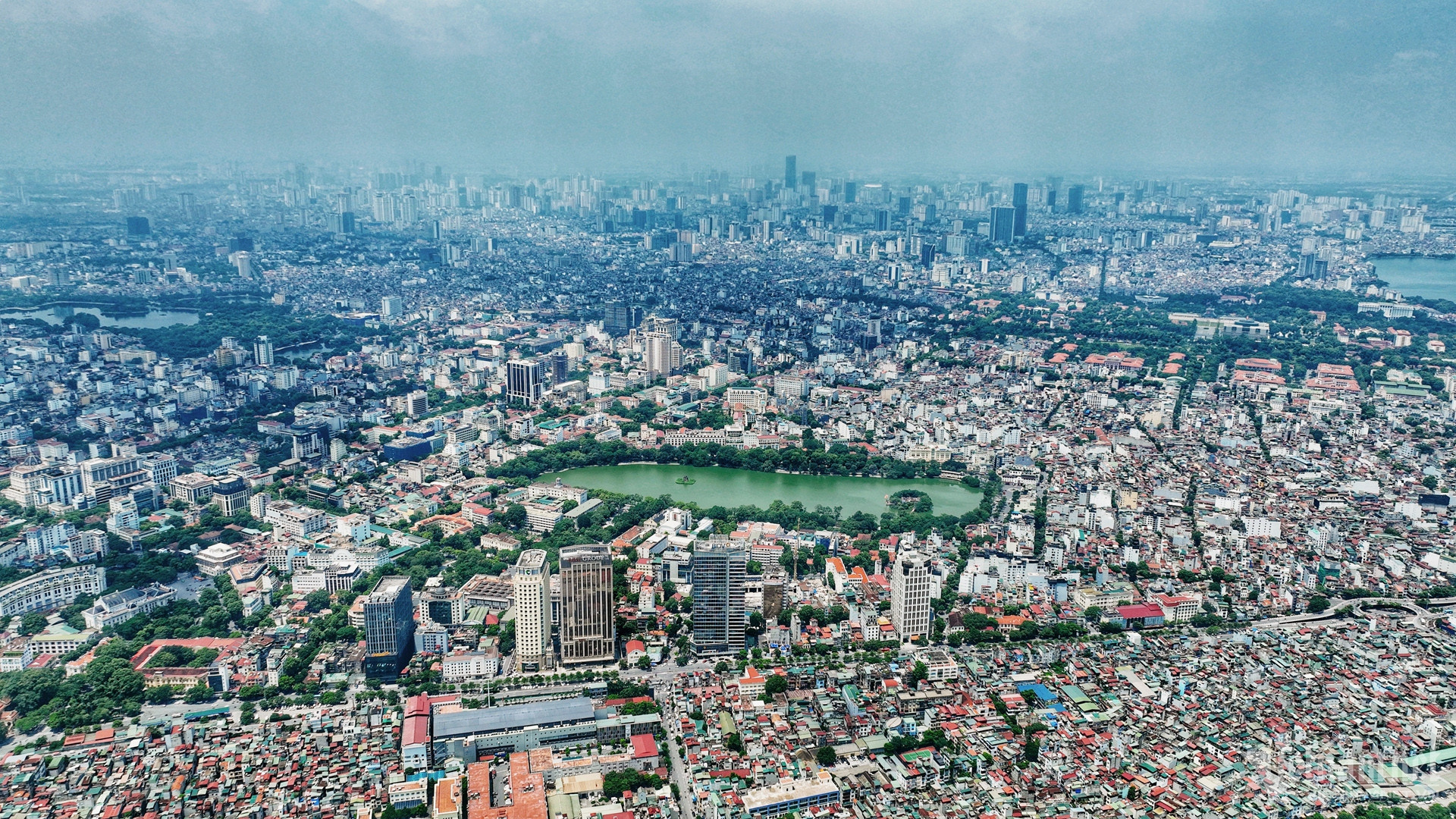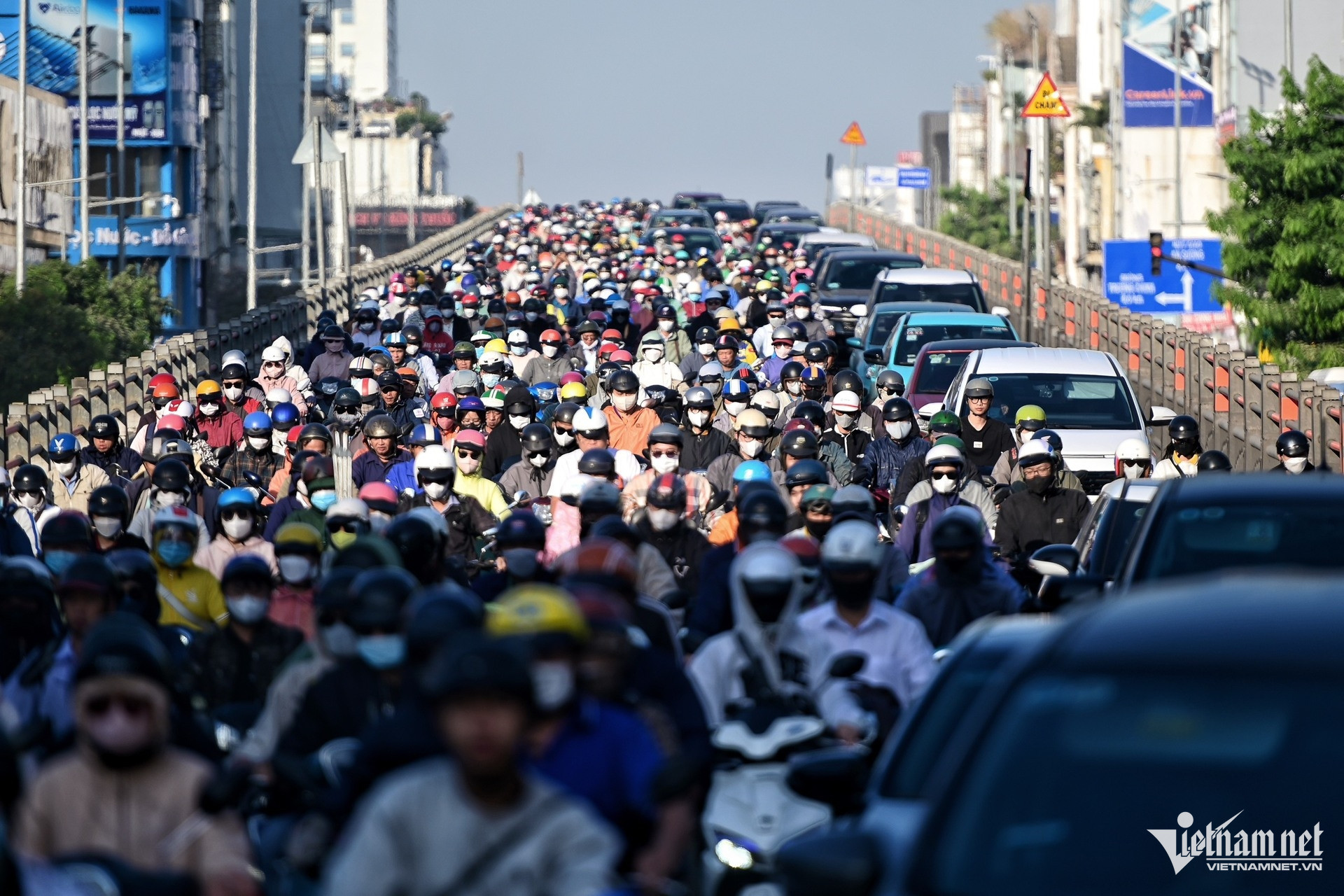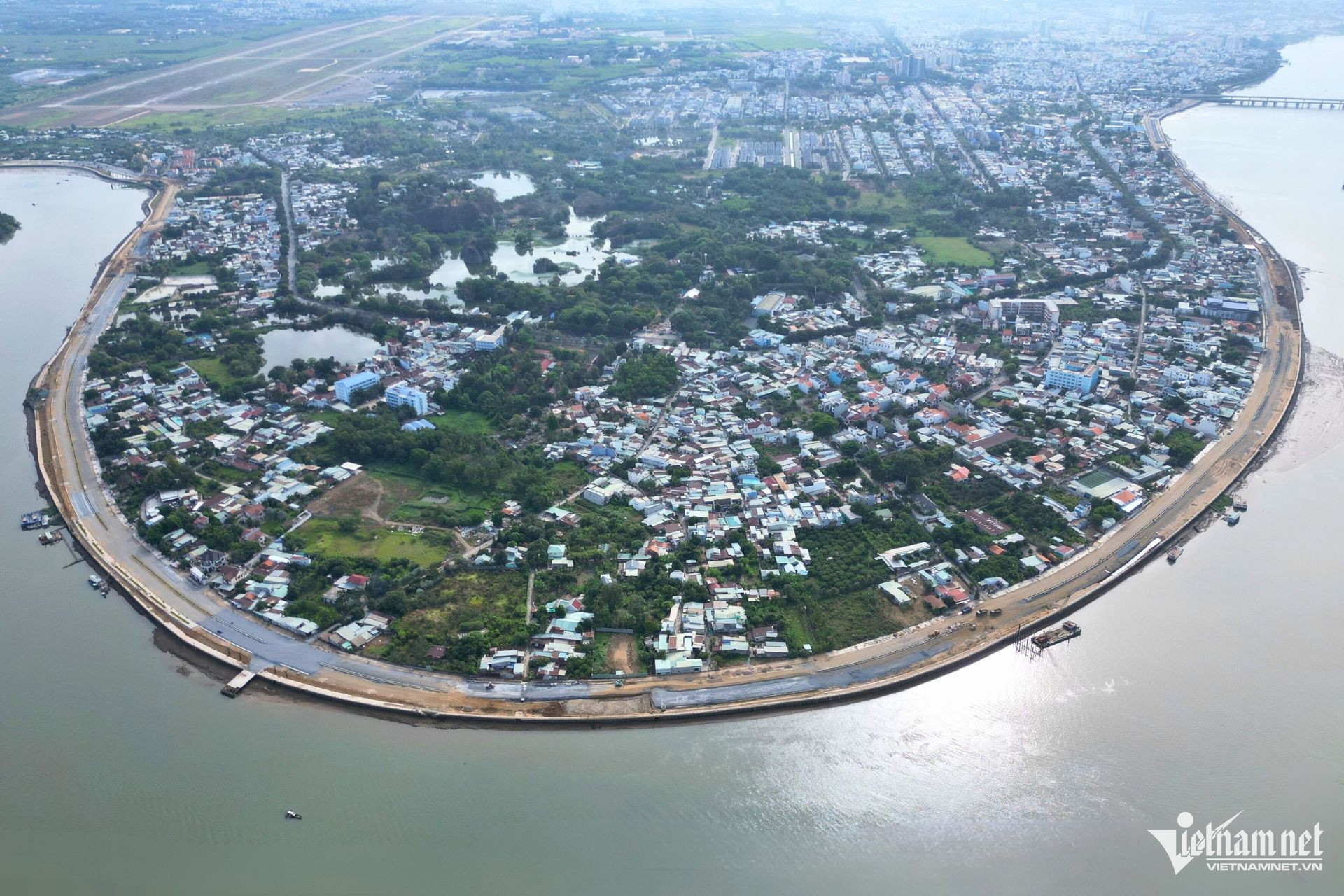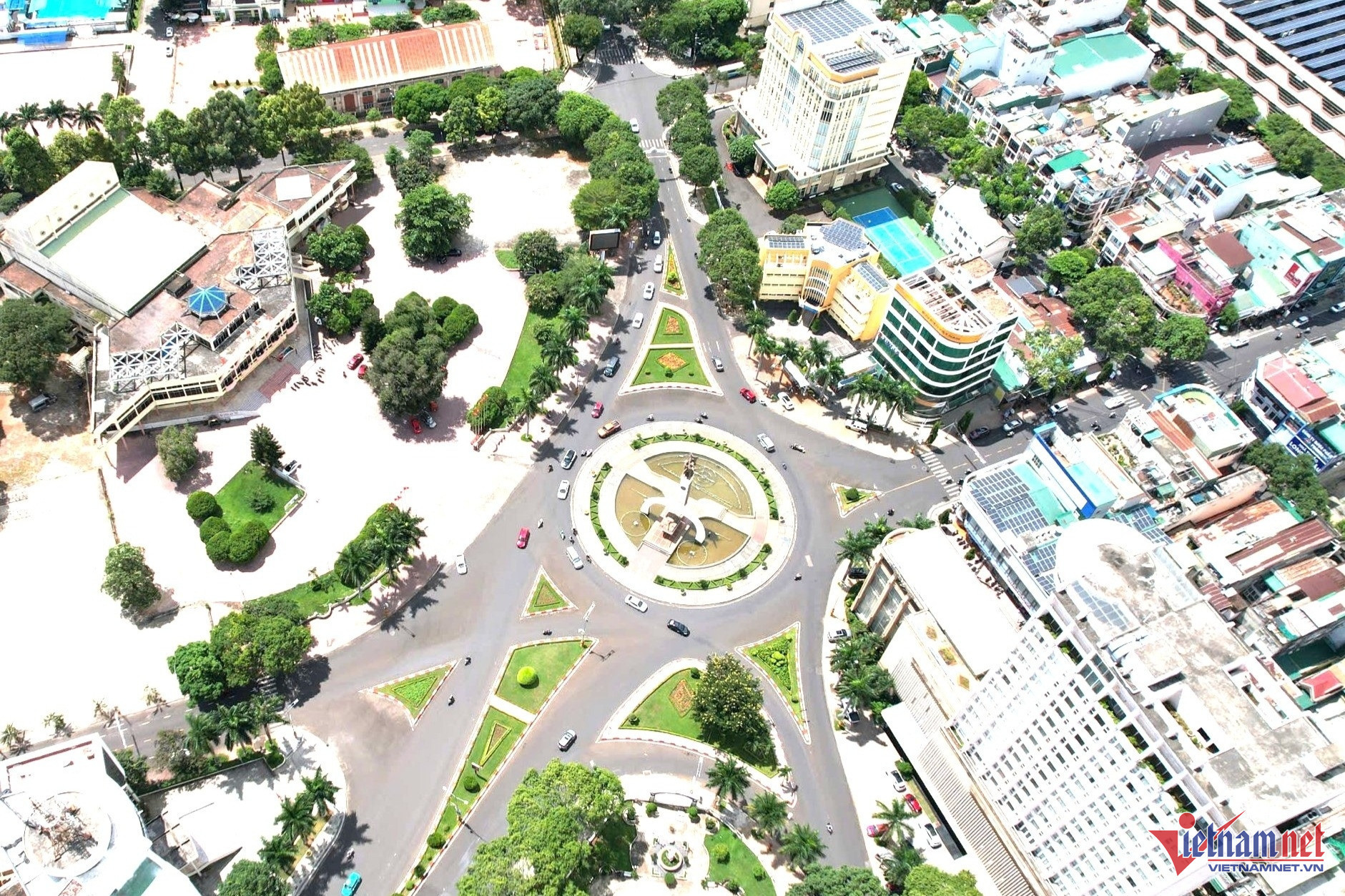Following a sweeping administrative overhaul, major Vietnamese cities including Hanoi, Ho Chi Minh City, Binh Duong, and Dong Nai are expected to witness the rise of newly merged “super wards,” each home to 100,000 to 300,000 residents.

A view of Hanoi. Photo: Hoang Ha
In Hanoi, which spans nearly 3,360 square kilometers with a population exceeding 8.5 million, the number of commune-level administrative units is expected to drop from 526 to just 126, comprising 47 wards and 79 communes.
Under the proposed reorganization, the newly formed Hong Ha Ward will cover 16.61 square kilometers and have a population of 126,062, making it one of the largest wards by population in the capital.
Meanwhile, the largest unit by area will be the newly established Ba Vi Commune - formed by merging several communes in Ba Vi District - which will stretch across 81.29 square kilometers and house nearly 40,000 residents.

A corner of the mega-city Ho Chi Minh City with over 8.5 million residents. Photo: T.K
In Ho Chi Minh City, a “mega-urban” center of over 8.5 million people, the number of commune-level units is projected to shrink from 273 to 102, including 78 wards and 24 communes.
Post-restructuring, the city will have 62 administrative units with populations under 100,000, and 40 wards and communes each exceeding 100,000 people. Among these, 23 will have populations ranging from 100,000 to 150,000; 17 units will fall between 150,000 and nearly 200,000.
The most populous area will be Ba Diem Commune with 192,230 people, followed by Hiep Binh Ward (191,878), Chanh Hung Ward (190,707), Dong Thanh Commune (187,758), and Binh Hung Hoa Ward (186,857).
Other large wards and communes include Binh Hung (183,535), Tan Hung (182,417), Tang Nhon Phu (181,317), Dong Hung Thuan (177,721), and Vinh Loc Commune (167,042).
As population densities rise, the city's transportation and infrastructure systems face mounting pressure.

High population density creates heavy pressure on Ho Chi Minh City’s traffic infrastructure. Photo: Dao Phuong
In Binh Duong Province, the number of commune-level units will be trimmed from 91 to 36, comprising 24 wards and 12 communes. Among them, some wards will become “super wards,” such as Di An Ward, which will span 21.375 square kilometers and accommodate 227,817 residents. An Phu Ward ranks second with 162,930 residents over 16.851 square kilometers.
Phu Giao Commune will be the largest by area, covering 192.833 square kilometers with a population of 42,739. Following it is Dau Tieng Commune, spanning 182.685 square kilometers with 39,056 residents.

A view of Bien Hoa City along the Dong Nai River. Photo: Hoang Anh
In Dong Nai Province, the number of commune-level units is expected to decrease from 159 to 55. Bien Hoa City, home to over 1 million people, will see its current 25 wards and communes reduced to 9. Among them, Tran Bien Ward - formed from six merged wards - will become the province's most populous, housing over 197,000 residents.
Long Binh Ward, created by merging three existing wards, will have over 168,000 residents, while Tam Hiep Ward, formed from four current wards, will host nearly 140,000.

In Dak Lak Province, commune-level administrative units are projected to decrease from 180 to 45. Buon Ma Thuot City will retain just three commune-level units, including Buon Ma Thuot Ward, which will span over 168 square kilometers and serve more than 331,000 people, becoming the central ward of the province.
Tuan Kiet